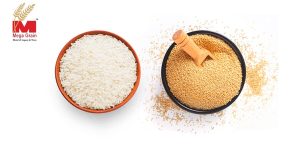
Navigating Challenges: The Impact of War on Rice and Millet Trade
The global trade of agricultural commodities, such as rice and millet, is a complex and dynamic ecosystem. However, amidst the backdrop of geopolitical conflicts and wars, the trade landscape can face significant disruptions and challenges. In this blog, we explore the impact of war on rice exports, rice manufacturers, millet exporters, and the broader agricultural trade. We also delve into strategies and resilience demonstrated by industry players to overcome these adversities.
Rice Exports and Manufacturers in Times of Conflict
Rice, being a staple food for billions of people, holds immense economic and strategic importance. During times of war, rice exports can be severely affected due to various factors such as trade restrictions, disrupted supply chains, and heightened geopolitical tensions. Exporting countries and rice manufacturers must navigate these challenges to maintain their presence in the global market.
Trade restrictions imposed during the war can lead to decreased export volumes and limited market access. This can impact the livelihoods of farmers and rice manufacturers relying heavily on international trade. Additionally, disruptions in transportation and logistics can further hamper the timely delivery of rice shipments, affecting both exporters and importers.
However, in the face of adversity, rice manufacturers and exporters often display resilience and adaptability. They explore alternative trade routes, establish strategic partnerships with neighboring countries, and leverage technological advancements to streamline operations and mitigate the impact of war on their trade.
Segment: Building Resilience: The Importance of Diversification and Innovation
The impact of war on rice exports, rice manufacturers, and millet exporter highlights the significance of building resilience through diversification and innovation. By expanding their customer base and exploring new markets, rice exporters can minimize their dependency on a single region or market, thereby mitigating the risks associated with conflicts.
Similarly, millet exporters can focus on developing value-added millet products, targeting niche markets, and investing in research and development to create innovative solutions. These strategies not only increase their market reach but also enhance the value proposition of millet, making it more resilient to the impact of war on trade.
Conclusion:
The effects of war on rice exports, rice manufacturers, and millet exporters are undeniable. However, the agricultural trade industry has shown remarkable resilience and adaptability in overcoming these challenges. By diversifying markets, leveraging technology, and embracing innovation, industry players can navigate through turbulent times of conflict and sustain their presence in the global trade landscape. As the world evolves geopolitically, adapting and finding creative solutions remains paramount for ensuring the uninterrupted flow of rice and millet. These essential commodities nourish millions of people worldwide.
